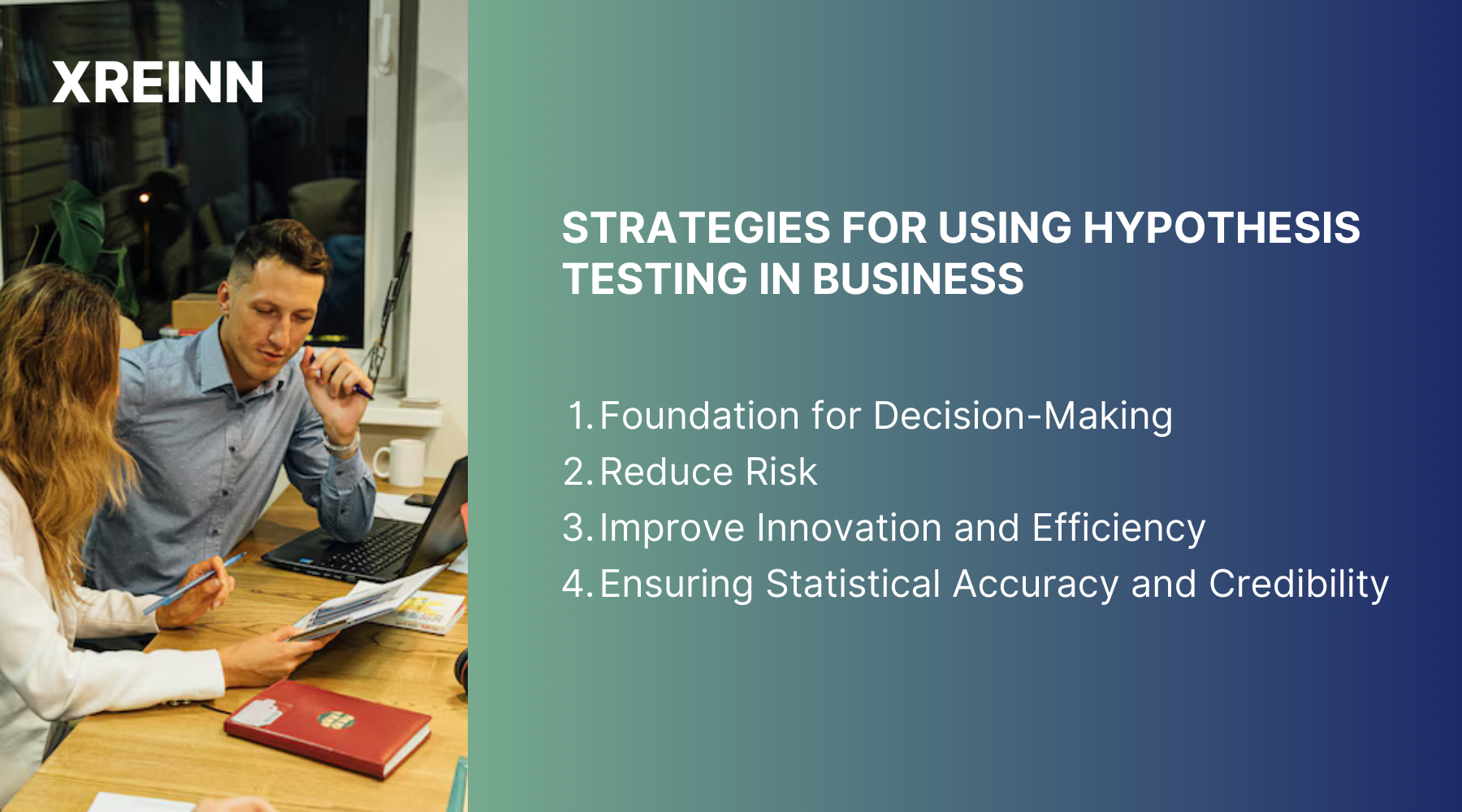Research
Importance of Hypothesis Testing in Business Research
Aug 09, 2024
Hypothesis testing is a fundamental component of business research, offering you a structured framework to analyze data, draw meaningful conclusions, and make well-informed decisions. It goes beyond simply proving or supporting a claim by providing a systematic way to understand data implications and reduce uncertainty in a business context. This process empowers you to help market complexities, identify opportunities for improvement, and achieve your business goals more effectively.
In this guide, we highlight the importance of hypothesis testing in business research and explain how it can improve your decision-making, promote innovation, and reduce risks.
What is Hypothesis Testing?
Hypothesis testing is a statistical method used to make inferences about a population based on sample data. It provides a structured approach to decision-making by evaluating two competing hypotheses: the null hypothesis (H0) and the alternative hypothesis (H1). The null hypothesis (H0) states no effect or difference, the baseline assumption that any observed variation is due to random chance.
In contrast, the alternative hypothesis (H1) suggests a significant effect or difference, challenging the null hypothesis and asserting that the observed variation is real. By systematically evaluating these hypotheses, hypothesis testing helps researchers and decision-makers determine whether the results observed in sample data are likely to reflect true effects or differences in the larger population.
Strategies for Using Hypothesis Testing in Business

Foundation for Decision-Making
When starting a new business initiative, the first step is often to develop a hypothesis. This hypothesis serves as a guiding statement that you'll test against real-world data. To use hypothesis testing effectively, begin by clearly defining your hypothesis.
For example, if you believe a new marketing strategy will increase customer engagement, phrase it as a testable statement: “Implementing this new strategy will result in a 20% increase in customer engagement over the next quarter.
How to Formulate and Test Hypotheses?
To formulate an effective hypothesis, ensure it is specific and measurable. For example, you might hypothesize that "Implementing a new marketing strategy will increase sales by 20%." Once you've defined your hypothesis, the next step is to collect relevant data to support or disprove it. This data can include historical sales figures, customer surveys, or analytics on engagement metrics.
After gathering the necessary data, select an appropriate statistical test based on your hypothesis and data type. For instance, a t-test might be suitable for comparing engagement levels before and after implementing a new strategy. Finally, analyze and interpret the results. If you discover a statistically significant increase in engagement, you can confidently proceed with the new strategy. However, if the results do not support your hypothesis, use the insights gained to understand what doesn't work and adjust your approach accordingly.
Reduce Risk
In business, risk is an inherent part of decision-making. Hypothesis testing provides a systematic approach to helping these risks by allowing you to test changes before fully implementing them.
How to Minimize Risks with Hypothesis Testing
1. Conduct A/B Testing: If you're unsure if a new website layout will increase conversion rates, create two versions of the site: one with the old layout and one with the new design. Randomly direct traffic to both and track key performance indicators (KPIs) like click-through rates and conversion rates. This helps you identify which layout performs better without committing to the new design immediately.
2. Use Control Groups: To better understand the impact of your changes, compare the results from the group experiencing the new change with a group that doesn't. This helps you see the real effect of the changes and make more informed decisions.
3. Iterate Based on Findings: Be ready to adjust based on your findings. If your initial hypothesis isn't correct, use the insights to improve your approach. This adaptability helps reduce risks and promotes continuous improvement in your organization.
Improve Innovation and Efficiency
Hypothesis testing is not just for validating existing ideas; it also drives innovation by encouraging a culture of experimentation.
How to Promote Innovation with Hypothesis Testing
1. Encourage Data-Driven Decisions: Encourage your team to rely on data rather than intuition by developing hypotheses based on observations and trends. For example, they might hypothesize that personalized product recommendations will increase sales.
2. Implement Structured Testing: Set up a structured testing process, such as an innovation lab, where they can experiment without fear of failure. Provide the tools and resources needed to analyze results effectively.
3. Apply Successful Strategies: Use the data from experiments to identify successful strategies and apply those insights across your business. For example, if personalized recommendations boost sales, expand this approach to other product lines. Moreover Analyzing experimental data and identifying successful strategies can be achieved with tools like Microsoft Power BI and Looker, which provide valuable insights for driving innovation.
Ensuring Your Data Is Accurate and Trustworthy
To make sure your business research is trustworthy, you need to add solid statistical practices to your hypothesis-testing process.
How to Keep Your Statistics Reliable
When conducting hypothesis testing, it’s important to select the right statistical test based on your specific hypothesis. Depending on your data, you might use t-tests, chi-square tests, or ANOVA. Make sure your sample size is large enough because larger samples tend to give more reliable results and reduce errors. Before starting, calculate how big your sample should be, and aim for a power level of at least 0.8 to ensure your results are valid.
When analyzing the results, don’t just focus on p-values; also look at effect sizes to understand the strength of the differences between groups. Finally, document your methodology and findings clearly so others can replicate your study and contribute to knowledge sharing within your organization
Conclusion
Hypothesis testing is an essential tool in business research that empowers you to make data-driven decisions with confidence. By providing a structured framework for testing assumptions, hypothesis testing improves your decision-making process, reduces risks, supports innovation, and ensures statistical accuracy in your research. As you handle the complexities of business, including hypothesis testing will help you find new opportunities and drive your business forward.

Data Analytics
Jun 27, 2024Master key concepts in data analytics with practical tips to enhance decision-making and achieve success in your projects and professional growth

Data Analytics
Jul 01, 2024Learn the essential stages of the data analytics workflow to turn your data into valuable business insights and drive growth.

